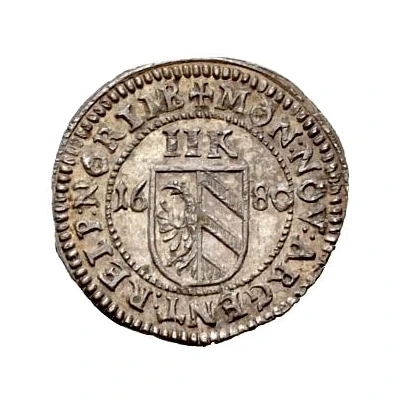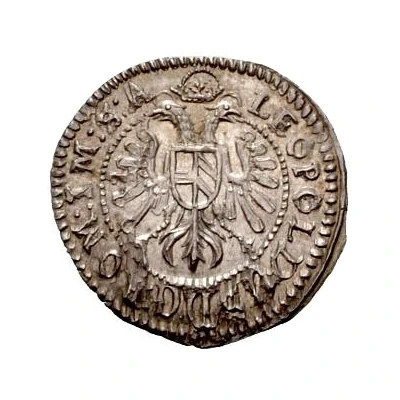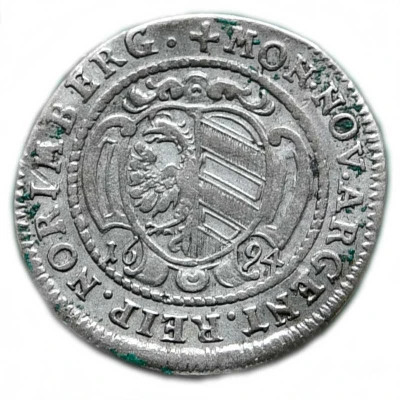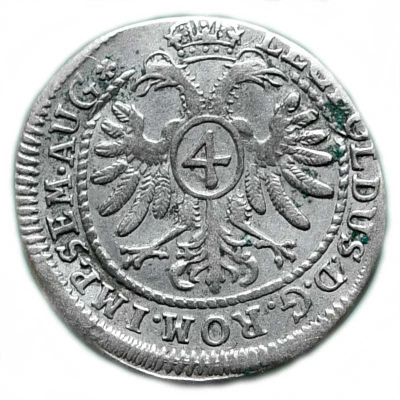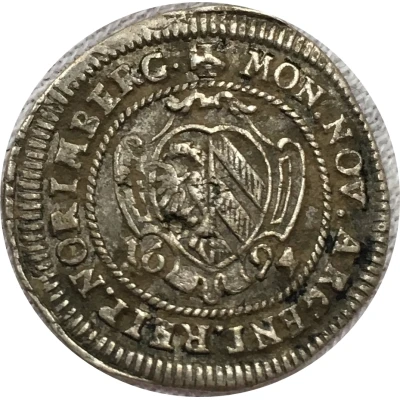
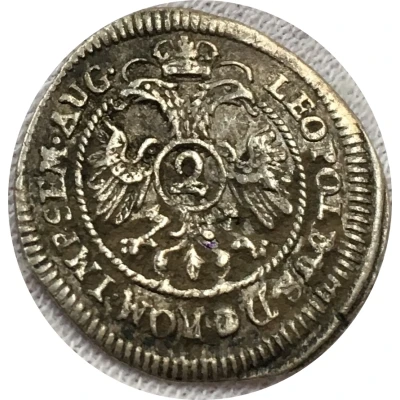

© apuking (CC BY-SA)
2 Kreuzer
| Silver | 1.00 g | 19.2 mm |
| Issuer | Free imperial city of Nuremberg (German States) |
|---|---|
| Period | Free City (1219-1806) |
| Emperor | Leopold I (1657-1705) |
| Type | Standard circulation coin |
| Years | 1694-1695 |
| Value | 2 Kreuzers (1⁄30) |
| Currency | Reichsguldiner (1620-1753) |
| Composition | Silver |
| Weight | 1.00 g |
| Diameter | 19.2 mm |
| Shape | Round |
| Orientation | Medal alignment ↑↑ |
| Demonetized | Yes |
| Updated | 2024-10-05 |
| Numista | N#109012 |
|---|---|
| Rarity index | 92% |
Reverse
Double-headed crowned eagle with denomination on brest.
Script: Latin
Interesting fact
The 2 Kreuzer coin from Nuremberg was minted during a time of great economic and political change in Europe. The coin was issued during the reign of Holy Roman Emperor Leopold I, who ruled from 1658 to 1705. During this period, the Holy Roman Empire was facing challenges from the growing power of neighboring nations, such as France and Sweden. Despite these challenges, the Nuremberg mint continued to produce high-quality coins like the 2 Kreuzer, which were widely used in trade and commerce throughout the region. The coin's design features the coat of arms of Nuremberg on one side and the imperial eagle on the other. The coat of arms includes a shield with a distinctive "N" shape, which represents the city's name and its connection to the Holy Roman Empire. The imperial eagle, on the other hand, symbolizes the coin's status as a standard circulation coin of the empire. Overall, the 2 Kreuzer coin from Nuremberg is a fascinating piece of history that provides a glimpse into the economic and political landscape of Europe during the late 17th century.
